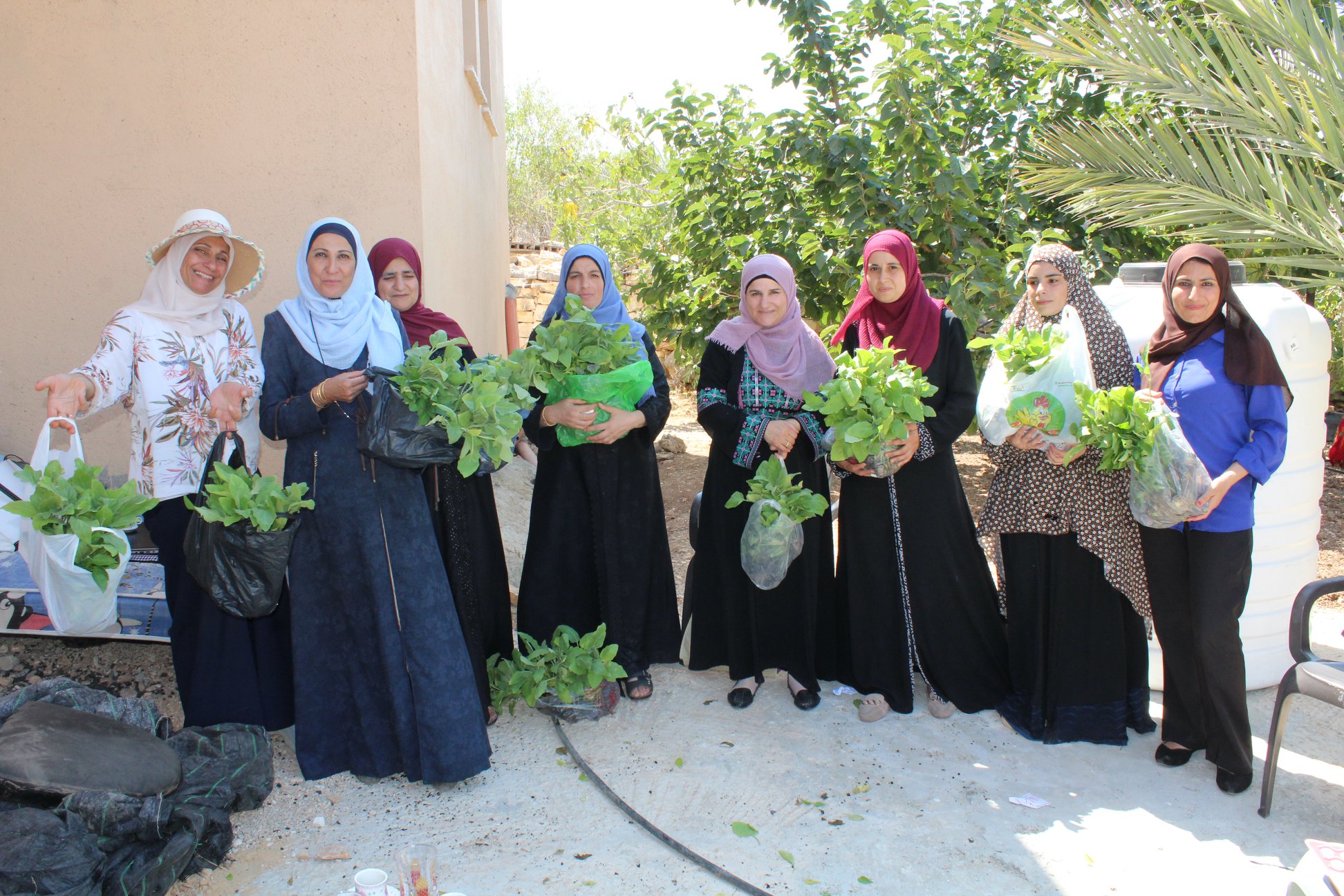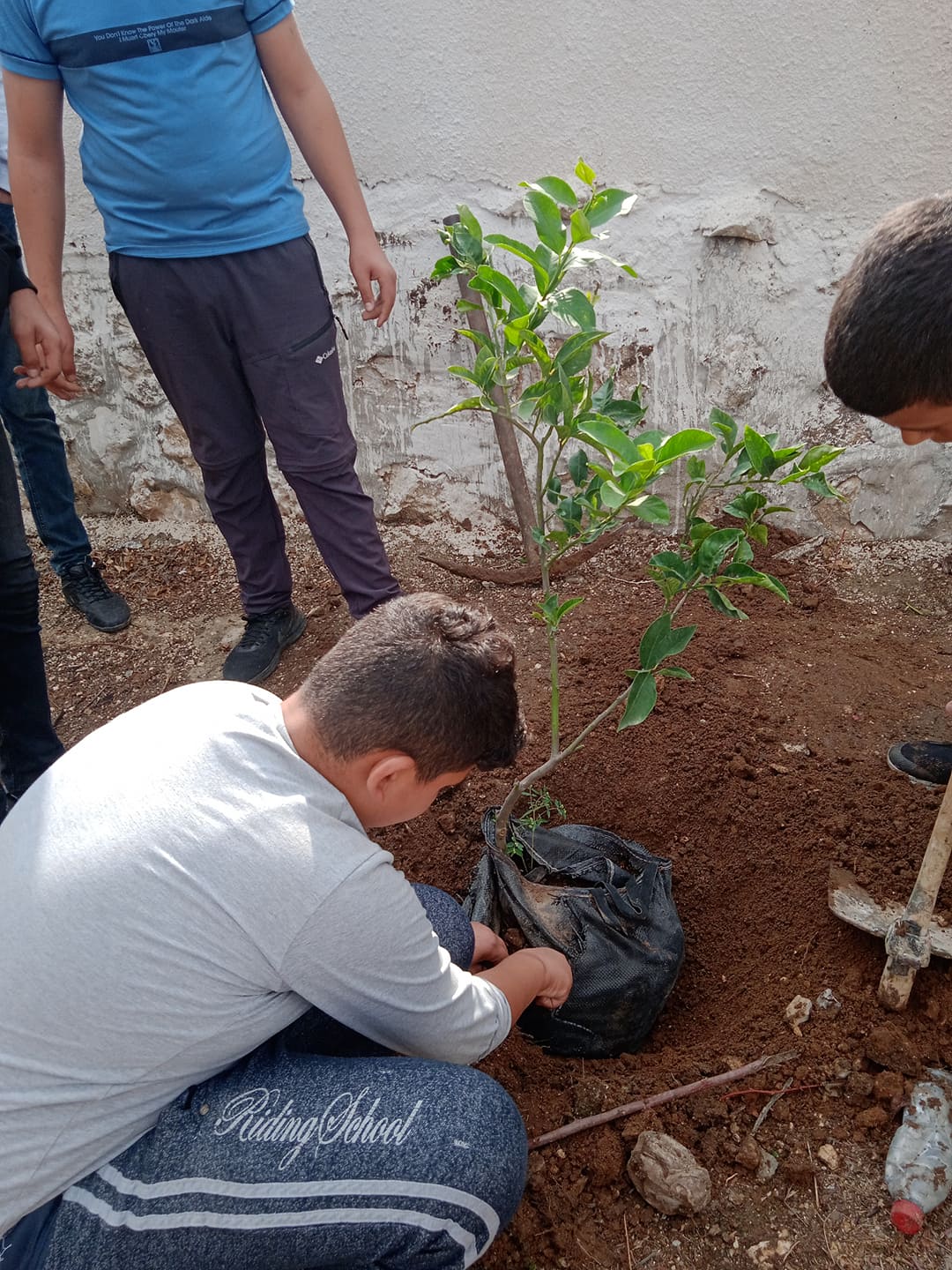The Great Green Ribbon of Palestine
James Chapman, Founder and Trustee of GapArt and current MSc Forestry student at Bangor University, describes how trees have affected his life and career so far, as well as an exciting new international project encouraging tree planting in Palestine.
My childhood was spent in Yemen, a country better known for humanitarian crises than its forests. Northern Ireland was where I enjoyed woodlands for the first time in my young life. Something clicked, possibly triggered by the arboreal deprivation of early childhood.
In the early 1980s I studied Arabic and Anthropology at university, and with an increasing interest in conservation I completed a MSc in Environmental Biology, specialising in mycology. Throughout all of this, I was fascinated in trees relationship with fungi and our relationship with them. Anyone who has walked in an ancient woodland will appreciate the magic portrayed by popular authors such as Susan Simard and Elif Sharak. RFS members will understand the biodiversity of woodlands, but ecosystem services and timber products are equally varied: food, shelter, building, fuel, and their fundamental role in climate change mitigation. Given this our destruction of the world’s forests is utterly irrational.
As an anthropologist I spent months with the Sekoya people in the Ecuadorian rainforest, and the Iban people of Brunei. I recognised the sacred respect that both groups have for their forest environment. This is in sharp contrast to our relationship with trees which has often been born out of exploitation. The Jarrah (Eucalyptus marginata) is a majestic tree native to Australia. The wood is hard and resistant to both rot and insect attack. In the 1850s British colonists started to bring the timber back to the UK for building, railway sleepers, telegraph poles, and surfacing many miles of London roads. This continued until 1918 but by this time the Jarrah forests had been all but destroyed. Destruction of the world’s forest continues; in the last 20 years 437 million hectares have been destroyed. That is nearly double the size of the whole of the UK. The current rate of destruction is 21ha a minute and yet we depend upon trees to mitigate against climate change.
Two contrasting schools of thought influenced the way that I chose to spend my working life. I was deeply moved by the 1985 Ethiopian famine, and Bob Geldoff’s Live Aid initiative, and wanted to be involved in humanitarian work. It seemed that the crises was largely caused by changing land use and environmental destruction. I wondered if a solution might be found by addressing environmental problems related to humanitarian crises. The two go hand in hand.
I created a volunteer charity to send people overseas to work on either humanitarian or environmental projects. This work continues in the form of GapArt. By planting trees for every volunteer, we have created a woodland in Glastonbury, Somerset that overlooks my farm.
In the UK our knowledge of forests has been largely forgotten: there is a disconnection with our natural environment. This is perhaps a reason that we suffer from the lowest rate of woodland cover in Europe.
In 2014 Somerset suffered from catastrophic flooding. This was partly caused by the run off from the hills surrounding the Levels. The hills once had a healthy coverage of ash, elm and oak woodland. As the elm succumbed to Dutch Elm Disease, ash filled the gaps, but 90% of ash is now suffering from ash dieback. I currently volunteer with the Reimagining the Levels, formed to readdress this balance. Last year we planted over 40,000 trees to mitigate against future flooding.

My work with GapArt took me to Palestine. I developed a love for the country and the often discredited, gentle people. The hospitality and gratitude shown to our volunteers defied the overwhelming difficulties. Inspired by the artist Andy Goldsworthy, and the Great Green Wall project, I came up with the idea of a tree-planting project in the West Bank. I knew that this could be so much more than creating a woodland. As well as environmental benefits, providing a source of food, individual empowerment, and community involvement, the Great Green Ribbon could provide a sense of well-being and purpose.
The Great Green Ribbon could be all of this. Seen from above I envisaged a delicate green ribbon, winding across a troubled land; an epic artistic statement to bring people together, focus on a common cause, and provide a symbol of lasting hope.
After three years of planning, a route has been mapped (following underground water courses) from Tulkarem to Jenin, and onto Jericho: 120 Km needing 72,000 trees. Food sovereignty is particularly important in a country with limited ability to trade with the outside world so a mix of fruit trees has been selected. We engaged the services of a women’s cooperative to gather seeds and create a tree nursery. Three-year-old saplings are now ready to form the first stage of the Great Green Ribbon. Planting will begin in November 2022.

This project will have massive environmental benefits, including carbon sequestration, hydrology, and biodiversity. It will link isolated pockets of wildlife, provide food security, as well as educational benefits. Planting and aftercare will be supervised by foresters from the municipal government, and undertaken by students, women’s groups, and international volunteers. Our training program for those in the Tulkarem refugee camp is giving participants a sense of purpose and hope.
Climate change is the issue of our times. Trees are our greatest ally in addressing the problem but we destroy our forests. I wanted to learn more to understand the science. I decided to spend three years studying MSc Forestry as a distance learner with Bangor University. It will be another two years before I qualify but the role of knowledgeable foresters is of huge importance. Right now my focus is on the Great Green Ribbon in Palestine. Warda Samara and her sister Malaka, social project directors, are coordinating the project in the West Bank. They have put together a fantastic team of Palestinian volunteers and professionals who are bringing the project to fruition.
I hope this will provide inspiration to fellow foresters. For anyone wishing to join us in the West Bank or donate towards an important cause, find out more here.
You can also follow the project on Instagram.

